Best
Budget Violin
String
-
Overall: Made with a synthetic core material
-
Best Feature: Features a special coating that helps to extend the lifespan of the strings
-
TedScore™: 8.5/10
Best
Overall Violin
String
-
Overall: Similar to the silver-wound NO DP03A strings, but with less bow noise
-
Best Feature: Designed to be very reliable
-
TedScore™: 10/10
Best
Beginners Violin String
-
Overall: Made with a solid steel core material
-
Best Feature: Available in a variety of gauges and tensions to suit different playing styles
-
TedScore™: 9/10
Hey there, fellow violinist!
I know you want to make your violin sound amazing, and finding the right strings can be a game-changer. Imagine the perfect tone and feel to take your playing to the next level!
That’s where a violin string chart comes in handy.
A violin string chart is like a cheat sheet that shows you the different types of strings available and their unique characteristics.
It’s like having a personal shopping assistant to help you choose the best strings for your playing style and preferences.
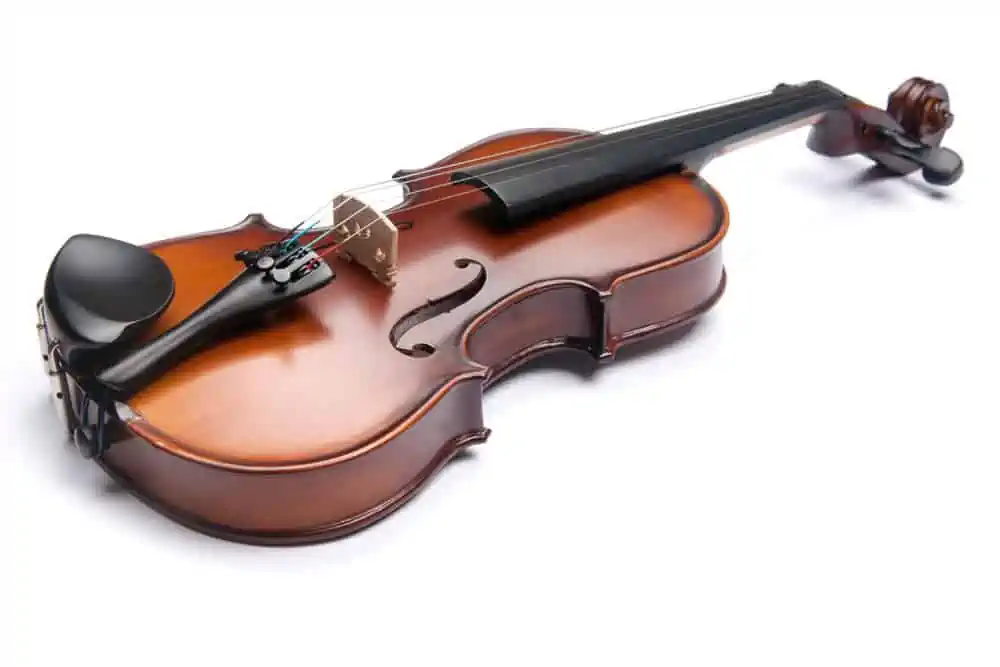
You can compare each string’s warmth, brightness, power, and subtlety and find the perfect fit for your violin.
Whether you’re just starting or a pro, a violin string chart can help you make an informed decision and take your playing to brand new heights.
So, keep reading to learn more and discover the perfect strings for your violin!
Understanding Violin String Charts
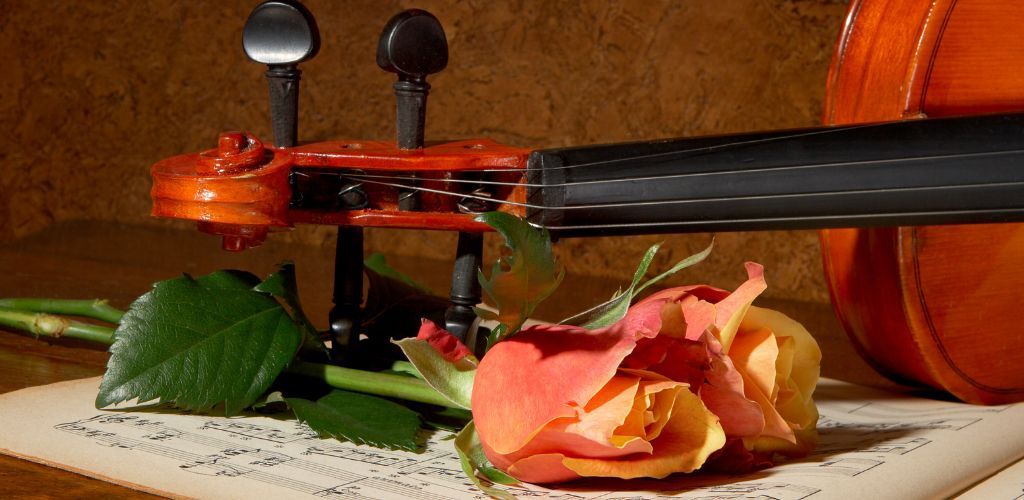
If you’re a violinist, you know the importance of having the right strings on your bright-sounding instruments.
But with so many options available, how do you know which strings are right for you?
That’s where a violin string chart comes in handy.
In this section, we’ll explore what a violin string chart is, why it’s important, and how to read one.
What is a Violin String Chart?
A violin string chart is a visual representation of the different types of strings available for the violin.
The chart typically includes information about the string’s material, tension, tone, and suitability for different playing styles and genres of music.
Some charts also include recommendations for specific brands and models of strings.
Why is a Violin String Chart Important?
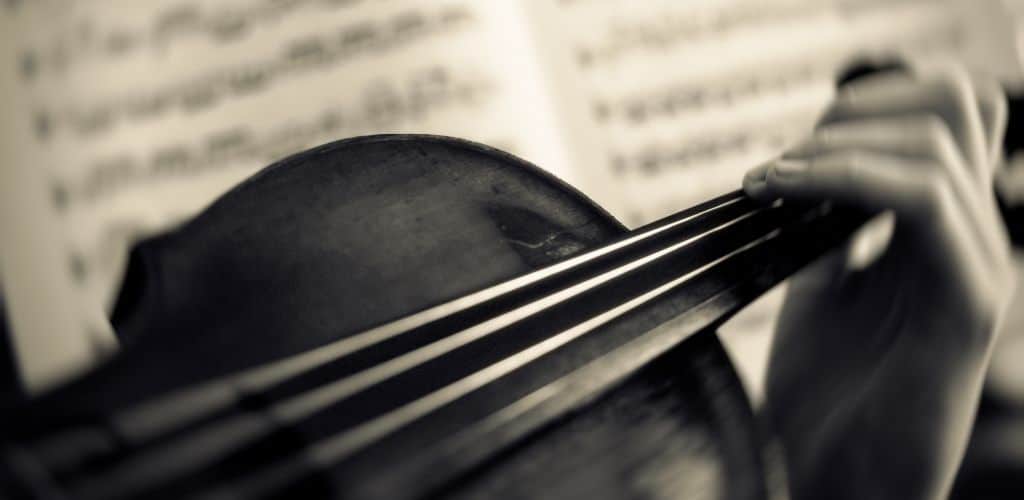
Choosing the right strings for your violin can make a big difference in the sound and playability of your instrument.
A violin string chart can help you make an informed decision about which strings to purchase based on your playing style, musical preferences, and budget.
It can also save you time and money by helping you avoid strings incompatible with your instrument or playing style.
How to Read a Violin String Chart
Reading a violin string chart is relatively straightforward. Here are some tips to help you get started:

These factors can greatly impact the string’s tone and playability.
Some strings are better suited for classical music, while others are more appropriate for fiddle or jazz.
Strings can vary widely in price, so choosing a string that fits your budget is important.
Violin String Comparison Chart
This chart provides various brands with links to detailed descriptions and easy ordering. And if you’re a viola player, don’t fret. While the chart is specifically for violin strings, many brands also offer options for viola.
It’s important to remember that the chart is a reference and not an exact science, but it’s a great starting point for finding the best sound for your instrument.
With a mix of submitted reviews and input, you can trust this comparison chart to help guide you toward the right strings.
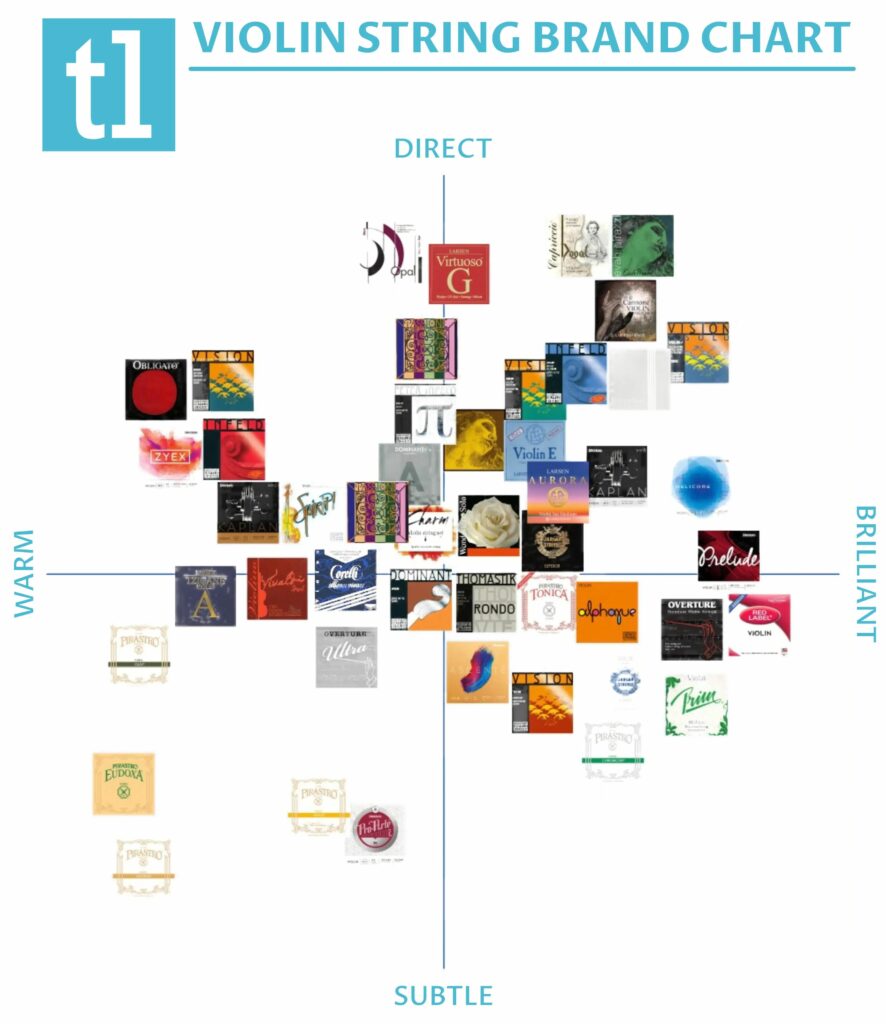
Types of Violin Strings

When choosing the right violin strings for your instrument, there are three main types: steel, synthetic-core, and gut strings.
Each type of these brilliant strings has its own unique characteristics and can greatly impact the sound and playability of your violin.
Steel Violin Strings
Steel strings are the brightest and most powerful of the three types. They’re often used by soloists and in orchestral settings where a strong, projecting sound is needed.
While steel strings can produce a beautiful, clear tone, they can also be harsh and unforgiving.
They are not recommended for beginners or those with sensitive ears.
Synthetic Core Violin Strings
Synthetic-core strings are the most popular type of violin strings. They’re made with a synthetic core wrapped in various materials, such as silver or tungsten.
They balance the warmth and complexity of gut strings and the stability and projection of steel strings.
Synthetic-core strings are a great choice for intermediate and advanced players who want a versatile sound.
Gut Strings
Gut strings are the oldest type of violin strings and were used exclusively before the invention of synthetic-core strings.
They’re made from sheep or lamb intestines and offer a warm, rich tone that is highly sought after by many professional players.
However, gut strings can be quite temperamental and require much maintenance. They’re also more expensive than synthetic-core strings and may not be suitable for all players.
What to Look for When Buying Your Violin Strings
String tension refers to the pressure the strings exert on the instrument. Higher tension strings produce a brighter and more projecting sound, while lower tension strings produce a more mellow and warmer sound.
The tension you choose depends on your preference and the sound you want to achieve.
Most strings come in different gauges, which refer to the thickness of the string. Thicker strings produce a fuller and more powerful sound, while thinner strings produce a more delicate and nuanced sound.
The gauge you choose depends on your playing style and the sound you want to achieve.
The sound and tone of your violin strings depend on the materials they are made of. Gut strings produce a warm, complex sound, while steel and synthetic strings can produce a bright, focused sound.
Synthetic core strings are popular because they combine gut strings’ warmth with steel strings’ stability and durability. It’s important to choose strings that complement the sound character of your violin.
The response and feel of your violin strings refer to how they feel under your fingers and how they respond to your playing.
Some strings have a quick and responsive feel, while others have a more forgiving and easy-to-play feel.
Choosing strings that feel comfortable and responsive to your playing style is important.
The durability and longevity of your violin strings depend on the materials they are made of and how often you play.
Gut strings are less durable than synthetic and steel strings, but they produce a unique sound that some players prefer.
Steel strings are the most durable but can be harsh on the fingers. Synthetic core strings are a good compromise between durability and sound quality.
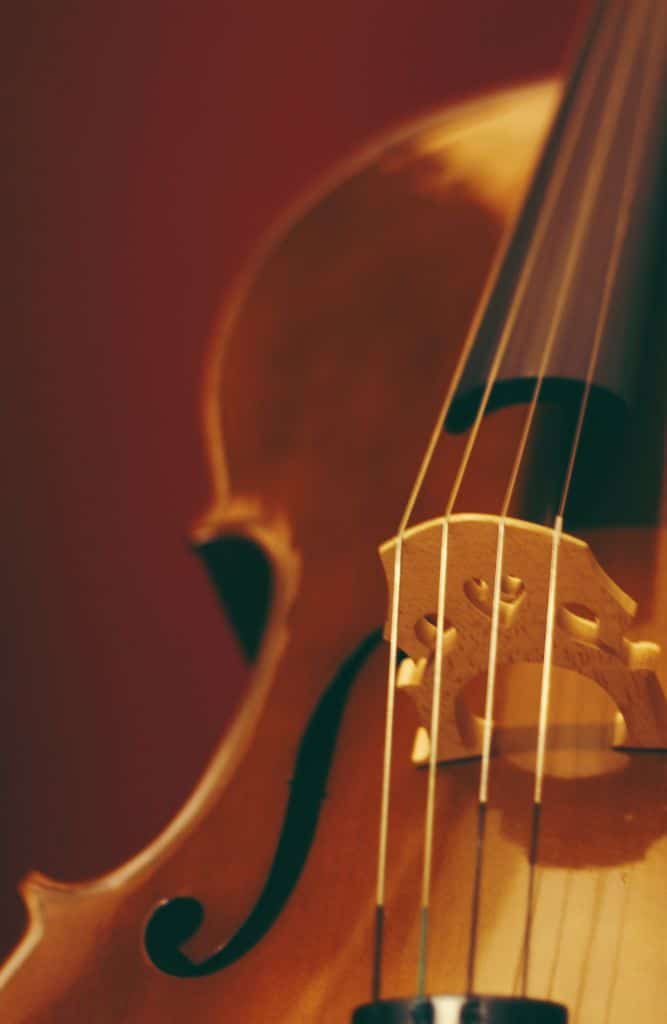
Recommended Best Violin Strings
Thomastik Alphayue Violin Strings
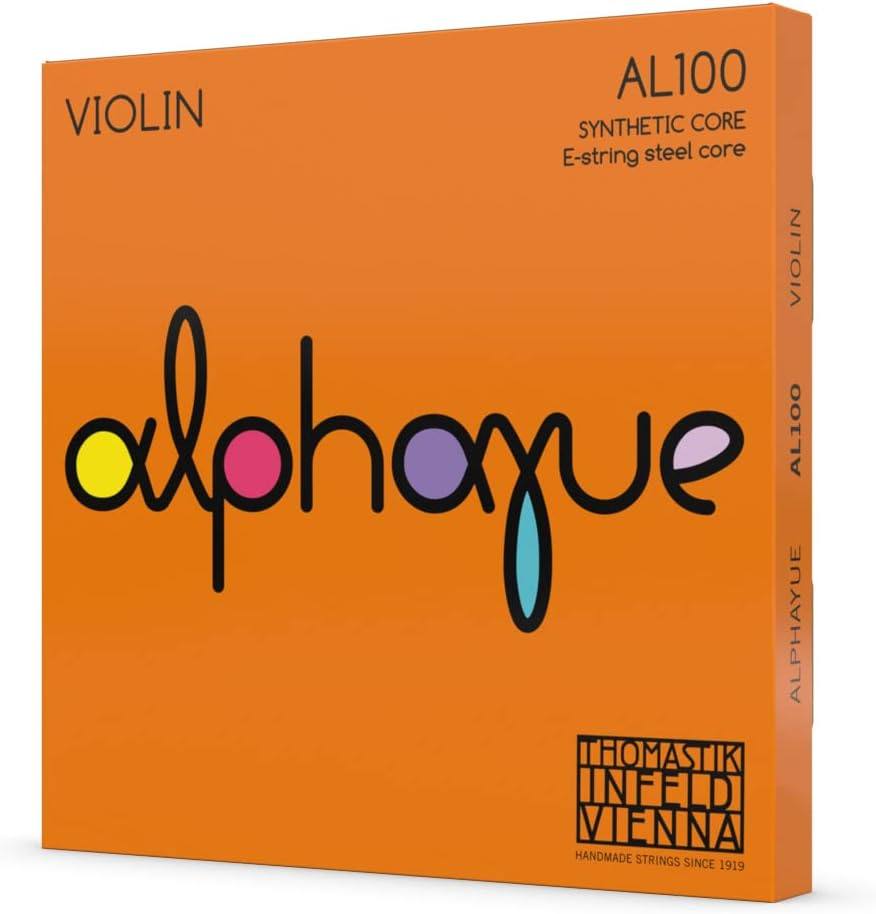
FEATURES: Made with steel core, tin-plated winding and removable ball end
OTHER INFO: Produces a warm and rich tone with excellent projection
- Improves the sound of basic instruments
- The high-quality design ensures durability
- Has a quick and easy response, making it ideal for virtuosic playing
- Can be more expensive than other strings on the market
When you click ‘Check Price’, you’ll see there are loads of great places to buy this item. Our personal favorite is Sweetwater for the US, and Thomann and Gear4Music for the UK & Europe.
They are the largest music retailers, with excellent customer service, competitive prices, really fast shipping, and the longest guarantees.
The professional musician who wrote this article combined many things,
from the product build, manufacturer’s reputation through to feedback
from other users, to create our famous TedScore™.
Pirastro Tonica Violin Strings Set
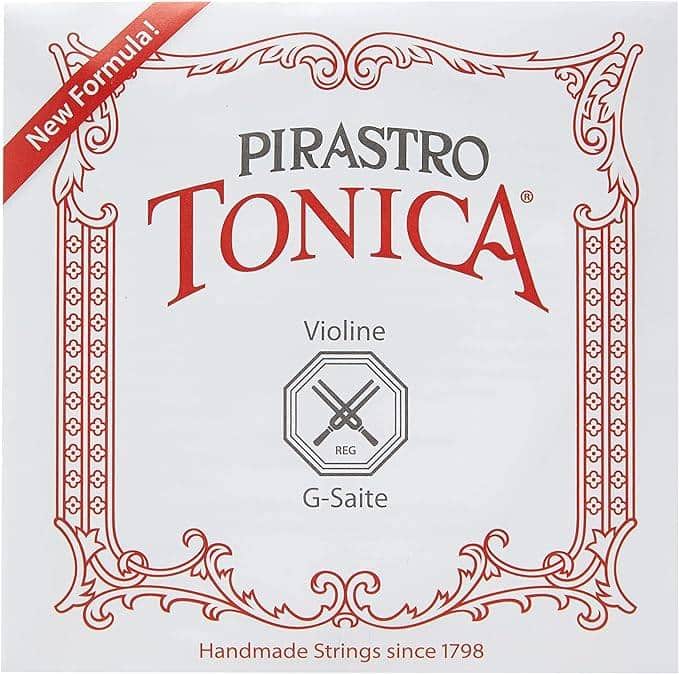
FEATURES: Made with a synthetic core material
OTHER INFO: Features a special coating that helps to extend the lifespan of the strings
- Produces a warm and mellow tone with good projection
- Offers a good balance between playability and durability
- May not offer the same level of tonal complexity and nuance as higher-end strings
When you click ‘Check Price’, you’ll see there are loads of great places to buy this item. Our personal favorite is Sweetwater for the US, and Thomann and Gear4Music for the UK & Europe.
They are the largest music retailers, with excellent customer service, competitive prices, really fast shipping, and the longest guarantees.
The professional musician who wrote this article combined many things,
from the product build, manufacturer’s reputation through to feedback
from other users, to create our famous TedScore™.
D'Addario Prelude Violin Strings Set
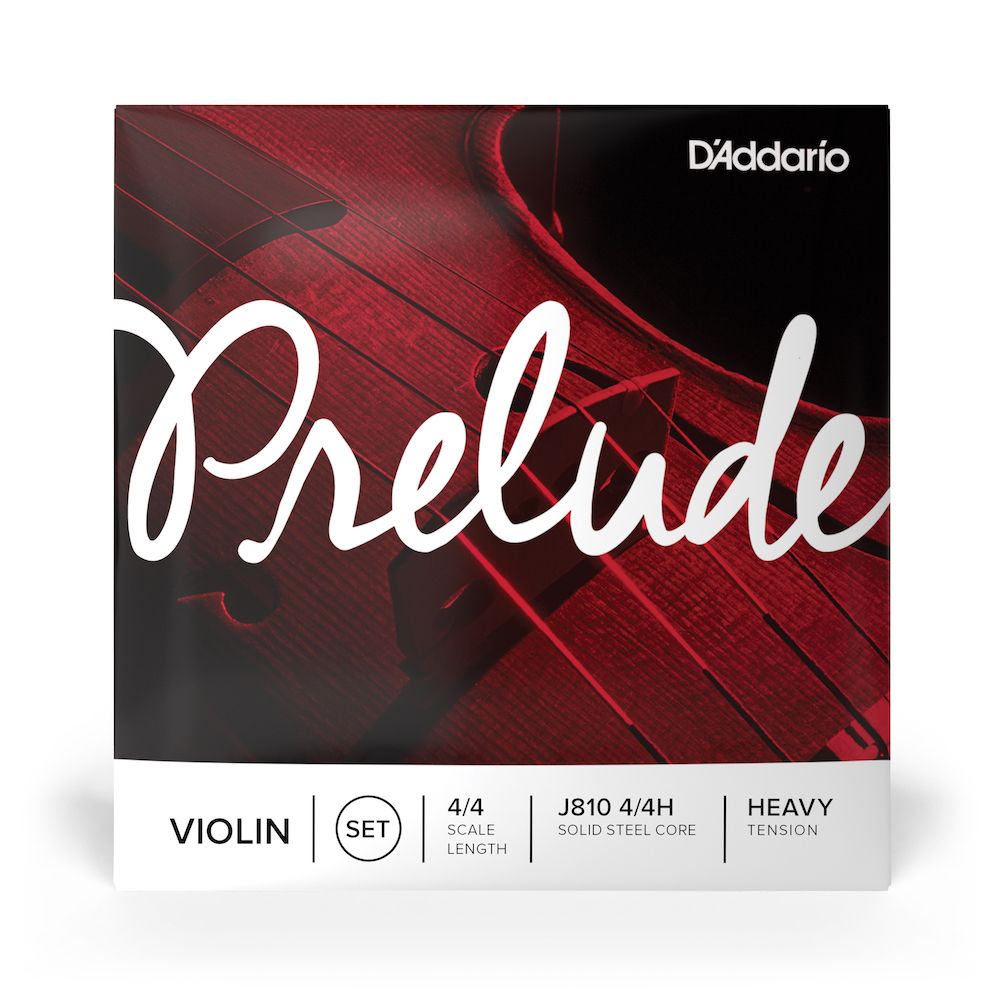
FEATURES: Made with a solid steel core material
OTHER INFO: Available in a variety of gauges and tensions to suit different playing styles
- Features a warm and bright tone with good projection
- Offers playability, durability, and affordability
- Produces a consistent and reliable sound
- A popular choice among educators and orchestra directors
- None!
When you click ‘Check Price’, you’ll see there are loads of great places to buy this item. Our personal favorite is Sweetwater for the US, and Thomann and Gear4Music for the UK & Europe.
They are the largest music retailers, with excellent customer service, competitive prices, really fast shipping, and the longest guarantees.
The professional musician who wrote this article combined many things,
from the product build, manufacturer’s reputation through to feedback
from other users, to create our famous TedScore™.
Corelli Crystal Violin Strings
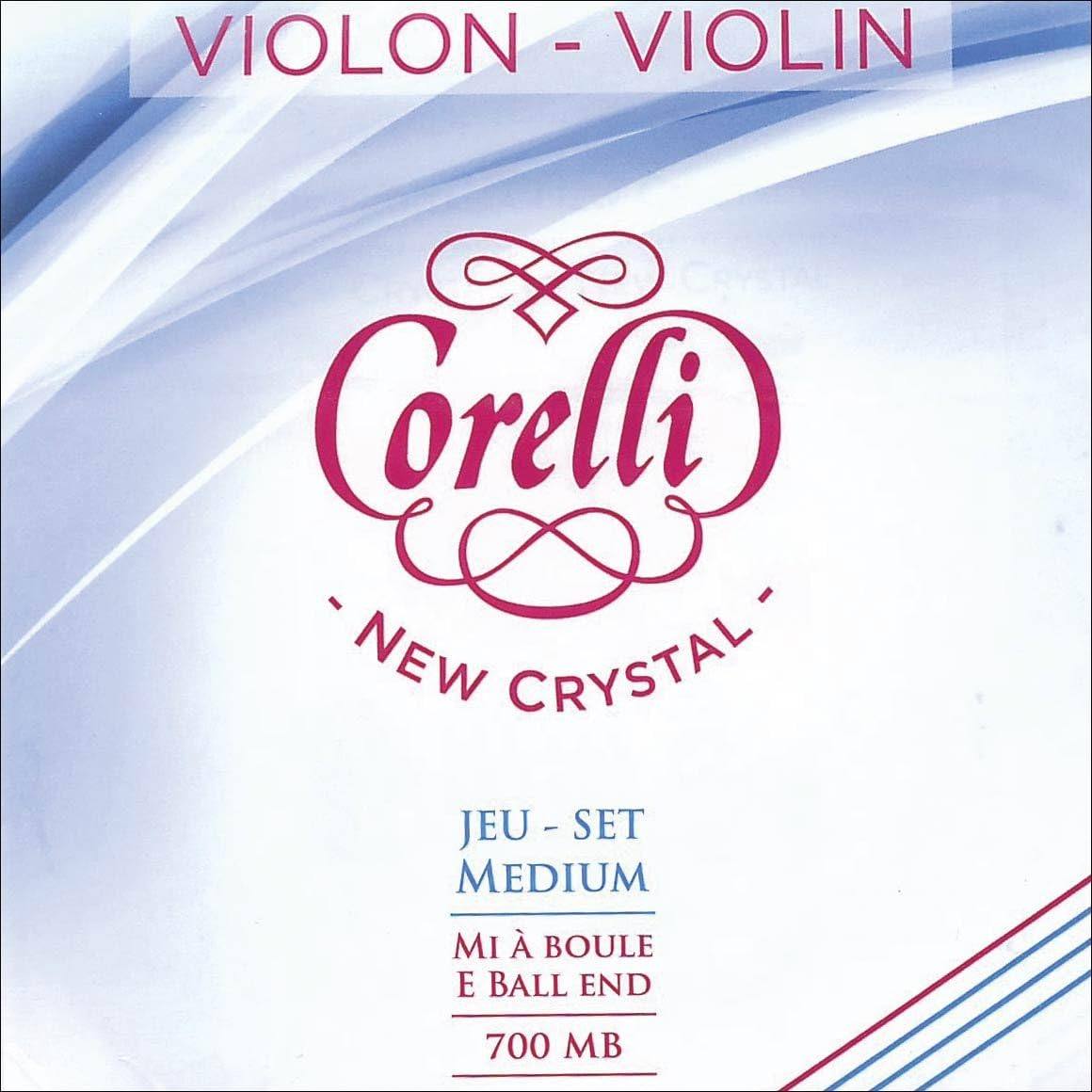
FEATURES: Have a warm and brilliant sound to add depth and character to your playing
OTHER INFO: Made with a synthetic core for durability and consistency over time
- Available in thick, medium, and thin gauges
- Durable and stay in tune longer, so you can spend more time playing Cons:
- Some players may find them over-rated or not to their personal taste
When you click ‘Check Price’, you’ll see there are loads of great places to buy this item. Our personal favorite is Sweetwater for the US, and Thomann and Gear4Music for the UK & Europe.
They are the largest music retailers, with excellent customer service, competitive prices, really fast shipping, and the longest guarantees.
The professional musician who wrote this article combined many things,
from the product build, manufacturer’s reputation through to feedback
from other users, to create our famous TedScore™.
Thomastik-Infeld Dominant Violin Strings

PERFECT FOR: beginners to professionals
FEATURES: The diameter of these strings is between the Dominant Pro A and G strings for a balanced feel
OTHER INFO: Similar to the silver-wound NO DP03A strings, but with less bow noise
Thomastik-Infeld Dominant Violin Strings
- Designed to be very reliable
- A good choice for those on a budget
- Offers consistency and durability
- The individual strings are well-balanced for a clear and focused sound
- None!
When you click ‘Check Price’, you’ll see there are loads of great places to buy this item. Our personal favorite is Sweetwater for the US, and Thomann and Gear4Music for the UK & Europe.
They are the largest music retailers, with excellent customer service, competitive prices, really fast shipping, and the longest guarantees.
The professional musician who wrote this article combined many things,
from the product build, manufacturer’s reputation through to feedback
from other users, to create our famous TedScore™.
Can You Mix Violin Strings?
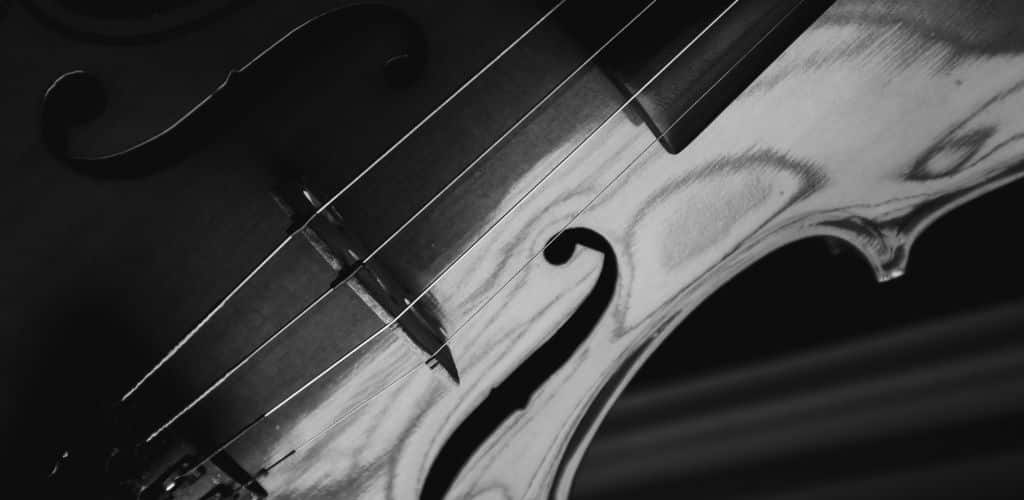
You may have heard that mixing violin strings is a common practice as a violinist. But is it a good idea? The answer is yes! Mixing different brands, types, and gauges of violin strings can be beneficial in many ways.
- 1. Customization: Mixing violin strings allows you to customize your sound according to your own tuning preferences. You can experiment with different combinations to find the perfect tone, projection, and playability balance that suits your playing style and musical genre.
- 2. Cost-effective: Violin strings can be expensive, and replacing a full set of strings every time can be a financial burden. Mixing strings allows you to replace only the strings that need to be changed, saving you money in the long run.
- 3. Improved sound: Mixing strings can help you achieve a more balanced, smooth and refined sound. For example, you can use a brighter E string with a warmer G string to balance out the overall sound of your violin.
- 4. Versatility: Mixing strings can help you adapt to different playing situations. For example, you can use a set of strings more suitable for solo performances and another set of gut core strings which can be better for orchestra settings.
Violin String Chart:
Important Points
You’ve made it to the end of our violin string chart journey! We hope you’ve learned much about choosing the perfect strings for your instrument.
Remember, finding the right strings is like finding the perfect bow – it takes time, patience, and a lot of practice!
But don’t worry.
You’re not alone on this quest.
Many resources, including violin string charts, can help you find the perfect strings for your playing style and preferences.
And who knows, maybe you’ll discover a new favourite string that will make your violin sing like never before!
So, what are you waiting for?
It’s time to put your new knowledge to the test and try out some new strings. Don’t be afraid to mix and match until you find the perfect combination.
After all, when it comes to violin strings, it’s all about finding harmony!
Now, go ahead and string along with some new strings, and let the warm sound of your violin sing its heart out!
Wait, there’s more!!!
If you’ve already started on your violin journey but wondering how long it will take to master this beautiful instrument, we’ll give you some clues!
Check out this next article to explore the factors that can affect your progress and give you an idea of how long it might take to become a skilled violinist
FAQ's
The order of violin strings is G, D, A, and E, from lowest to highest pitch. The strings stretch under tension from a tailpiece on one end over a wooden bridge to the other end, where they are fastened under wooden pegs.
You can identify your violin strings by matching the colour of the peg ends and tailpiece ends of your strings to a string colour chart. You can also click on the photo of the string winding pictured in the chart to go directly to a web store and order a new string.
Professional violinists use a variety of strings depending on their preference and the type of music they are playing. Some popular strings professionals use include Dominant, Evah Pirazzi, and Obligato.
The size of the strings you need for your violin depends on the size of your instrument. You can use a violin size chart to determine the correct size of your violin and the corresponding string size.



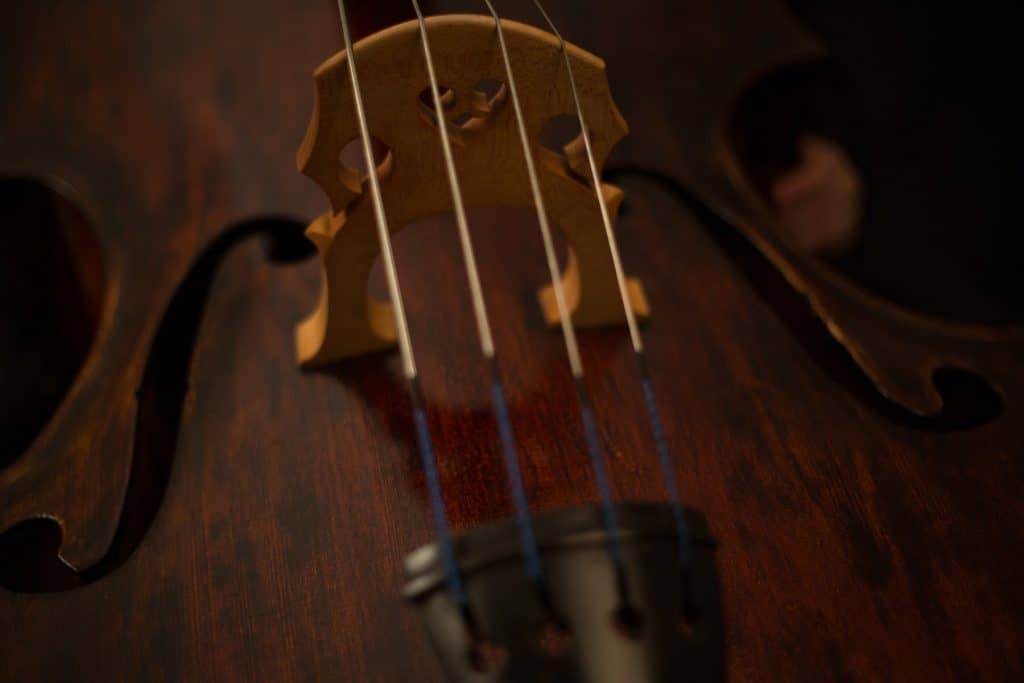
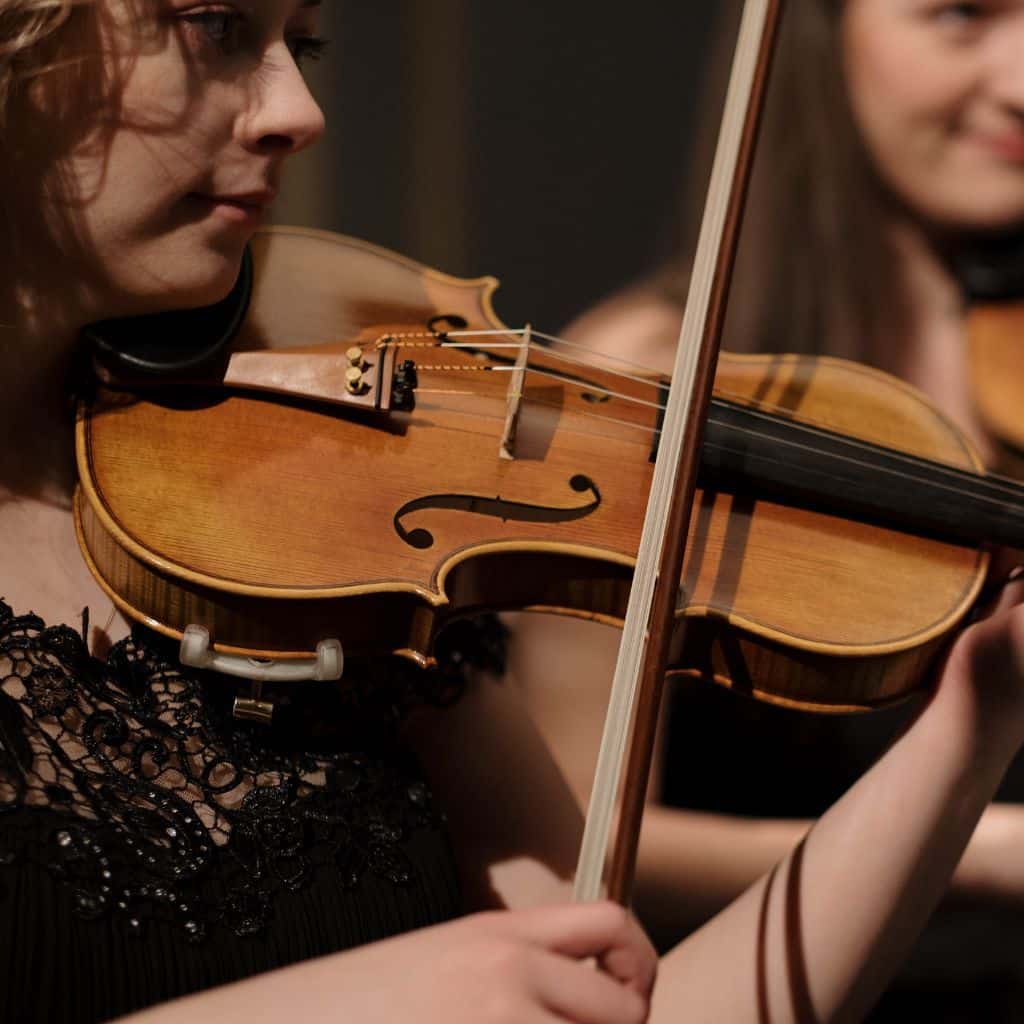









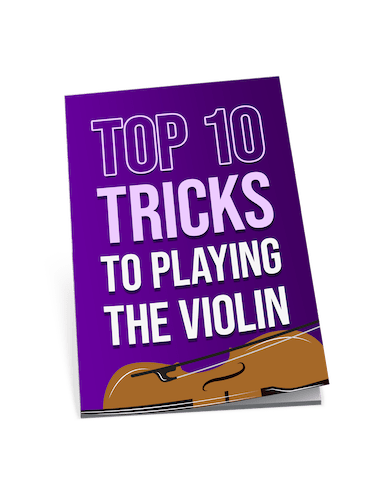
this was nice read, can anyone use those strings or just pros?
Interesting article, Reg Clews. However, I think you’ve glossed over some crucial aspects when it comes to mixing violin strings. There’s a lot to consider in terms of tension balance and overall sound production that wasn’t fully explored. Would love to see a deeper dive into this, maybe even some real-world examples of setups that have worked.
VioTechie, sure. Tension balance is key for maintaining an even sound across all strings and ensuring the violin plays comfortably. Poor balance can really throw off your playing.
TheStringMaster, could you expand on the tension balance aspect? How significant is this in choosing string combinations?
really enjoyed the bit on gut strings, not many talk about those anymore. keep up the good work!
Reg Clews, fantastic overview on violin strings. I was particularly interested in the section about synthetic core violin strings. Do they provide a warmer sound compared to steel strings, and how do they fare in terms of durability? Appreciating the depth you’ve gone into here.